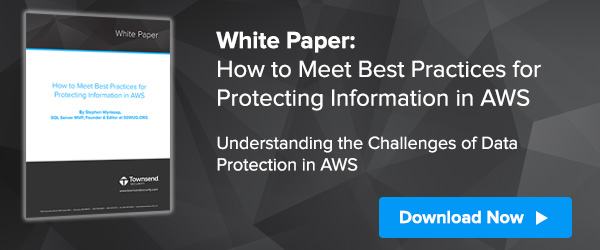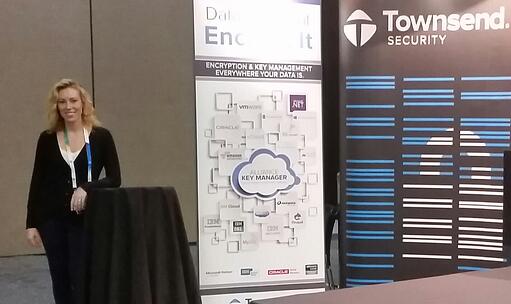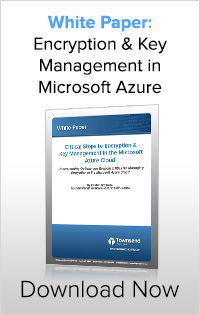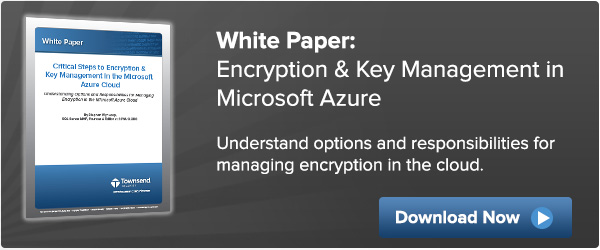An excerpt from the latest white paper “How to Meet Best Practices for Protecting Information in AWS” by Stephen Wynkoop, SQL Server MVP, Founder & Editor of SSWUG.org
 Working in the cloud presents several challenges unique to that environment, including significant growth and change in the area of data protection and encryption. There is much confusion about what is - and is not - encrypted and protected. This encryption of information, and the management of the keys and access controls is a core objective of this paper. If you can render information useless if accessed illegitimately, you have successfully addressed a whole host of regulations, compliance and best practices.
Working in the cloud presents several challenges unique to that environment, including significant growth and change in the area of data protection and encryption. There is much confusion about what is - and is not - encrypted and protected. This encryption of information, and the management of the keys and access controls is a core objective of this paper. If you can render information useless if accessed illegitimately, you have successfully addressed a whole host of regulations, compliance and best practices.
The very definition of protection by cloud providers is an important part of understanding the requirements and challenges of your configurations and information protection. AWS approaches data protection in several ways that impact your systems. The first is the configuration and design of your infrastructure. This consideration includes establishing Virtual Private Clouds (VPC) and providing for encryption of some information stores. The challenge exists in understanding the protection of these information stores and determining what you need to do to bring these protections in line with your requirements and compliance areas.
As you consider your systems, data protection will come down to several important areas:
- Physical access controls – This refers to the doors, secure access controls and other protections at the physical server and server room level.
- Logical access controls for your systems – These are the controls you put in place to prevent unwanted access to information.
- Data access – Data access controls are typically enforced at the information stores level.
- Protection of data in case of a breach – This is addressed by making the information in your systems unusable if accessed in a way that is unwanted.
Stephen’s white paper also covers the impact on data protection in public vs. private clouds, security fundamentals in AWS, and the best practices for deploying an encryption key management solution including:
- Segregation of Duties
- Dual Control and Split Knowledge
- Key Creation (and understanding strong keys)
- Key Rotation
- Protection of Keys
- Access Controls and Audits (Logging)
In his white paper, Stephen also discusses cloud-provider-based key management services and some of the important features, options, questions, and concerns that should be considered before selecting a service or a key management solution. Some important aspects to understand are:
- Control, Ownership, and Access - By managing your own encryption services and providing for industry-compliant key management and data protection practices, you help ensure that your data remains managed by your own secure keys.
- Multi-Tenancy and Key Management - In a worst case scenario it’s possible that keys could be compromised.
- Access to Keys - Many systems and architectures are based on hybrid solutions. Cases where there are systems on-premises combined with systems in the cloud are areas that will be problematic with the AWS services. Systems not on the AWS hosted services will not have access to the key management services on AWS.
There are many different considerations when thinking about the choices in your key management solution. Be sure to fully understand logs, key management, backups and other elements that provide the utility you require. Finally, be sure you’re checking for proper compliance and certification of the solutions you are considering. It is important that any solution you choose has been through a FIPS 140-2 validation, and that you have a full understanding of any PCI, HIPAA or other regulatory body requirements.
Please download the full document to learn more about protecting information in Amazon Web Services and how Townsend Security’s Alliance Key Manager for AWS provides a FIPS 140-2 compliant encryption key manager to AWS users who need to meet data privacy compliance regulations and security best practices.




